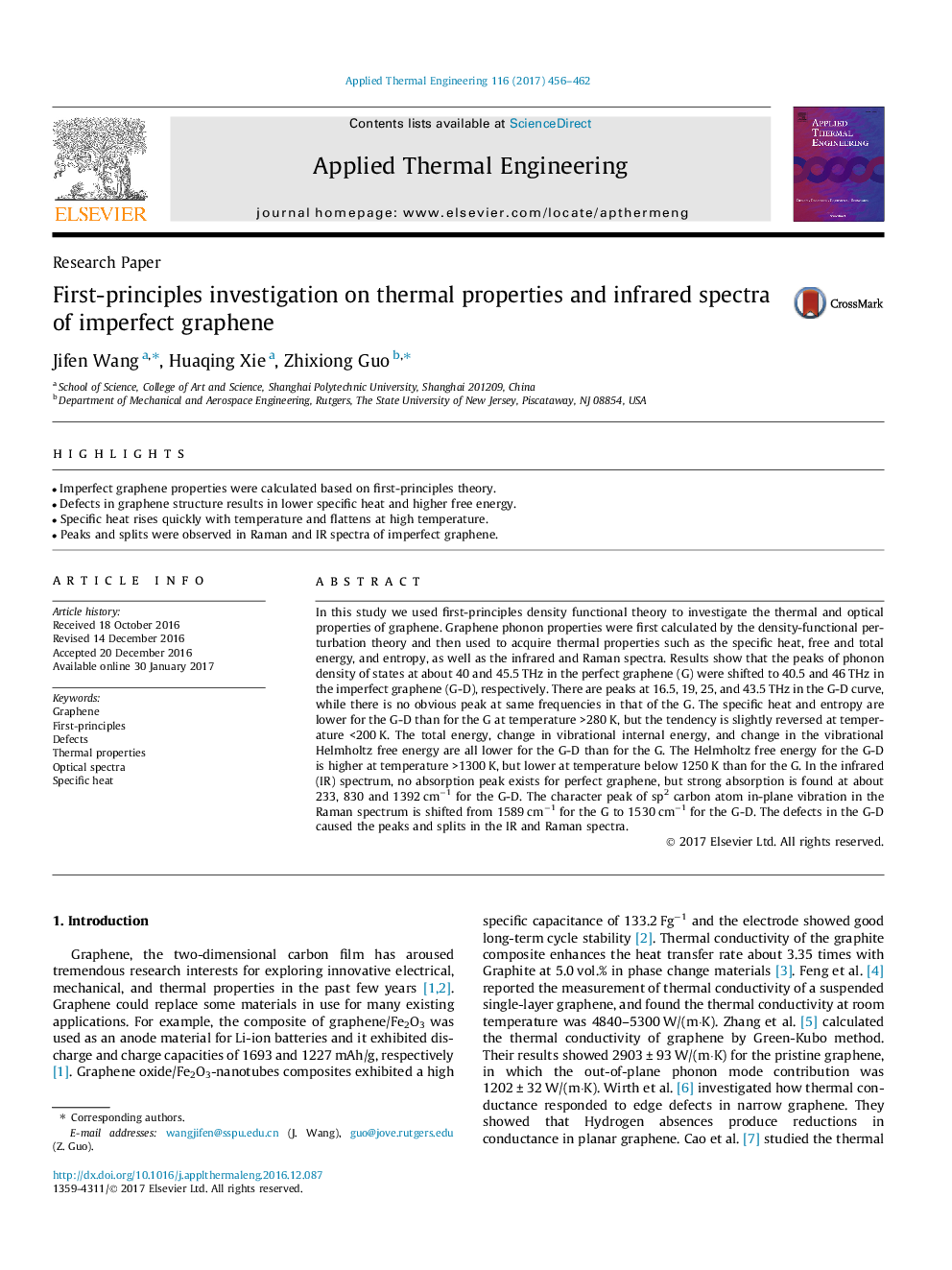| Article ID | Journal | Published Year | Pages | File Type |
|---|---|---|---|---|
| 4991455 | Applied Thermal Engineering | 2017 | 7 Pages |
Abstract
In this study we used first-principles density functional theory to investigate the thermal and optical properties of graphene. Graphene phonon properties were first calculated by the density-functional perturbation theory and then used to acquire thermal properties such as the specific heat, free and total energy, and entropy, as well as the infrared and Raman spectra. Results show that the peaks of phonon density of states at about 40 and 45.5Â THz in the perfect graphene (G) were shifted to 40.5 and 46Â THz in the imperfect graphene (G-D), respectively. There are peaks at 16.5, 19, 25, and 43.5Â THz in the G-D curve, while there is no obvious peak at same frequencies in that of the G. The specific heat and entropy are lower for the G-D than for the G at temperature >280Â K, but the tendency is slightly reversed at temperature <200Â K. The total energy, change in vibrational internal energy, and change in the vibrational Helmholtz free energy are all lower for the G-D than for the G. The Helmholtz free energy for the G-D is higher at temperature >1300Â K, but lower at temperature below 1250Â K than for the G. In the infrared (IR) spectrum, no absorption peak exists for perfect graphene, but strong absorption is found at about 233, 830 and 1392Â cmâ1 for the G-D. The character peak of sp2 carbon atom in-plane vibration in the Raman spectrum is shifted from 1589Â cmâ1 for the G to 1530Â cmâ1 for the G-D. The defects in the G-D caused the peaks and splits in the IR and Raman spectra.
Related Topics
Physical Sciences and Engineering
Chemical Engineering
Fluid Flow and Transfer Processes
Authors
Jifen Wang, Huaqing Xie, Zhixiong Guo,
